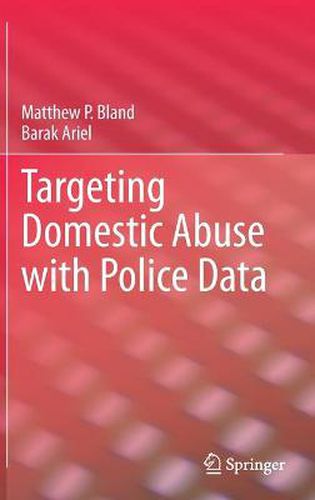Readings Newsletter
Become a Readings Member to make your shopping experience even easier.
Sign in or sign up for free!
You’re not far away from qualifying for FREE standard shipping within Australia
You’ve qualified for FREE standard shipping within Australia
The cart is loading…






This title is printed to order. This book may have been self-published. If so, we cannot guarantee the quality of the content. In the main most books will have gone through the editing process however some may not. We therefore suggest that you be aware of this before ordering this book. If in doubt check either the author or publisher’s details as we are unable to accept any returns unless they are faulty. Please contact us if you have any questions.
This book explores the potential of domestic abuse data to assess the level of harm caused to victims and the amount of resources required to respond to it. Policing domestic abuse has become a major activity for the police service in England and Wales. Part of the police strategy is to gather hundreds of thousands of detailed records about victims and suspects - the single largest set of domestic abuse records available, but one that to date has largely unexplored by researchers. In this volume, Matthew Bland and Barak Ariel analyse three substantial datasets taken from police forces across the country and ask:
*
Can police data be used to derive meaningful insight?
*
How should we use these data to measure harm?
*
Just how much domestic abuse involves a repeat victim?
*
Does abuse get more serious over time?
*
Can serious domestic abuse be predicted before it occurs?
This volume illustrates the scale of the challenge the police and other agencies face with reducing domestic abuse. A small proportion of individuals generate a majority of harm; this book argues that police records offer opportunities to identify these individuals before the harm occurs. Demonstrating that statistical techniques can be used to profile domestic abuse to target harm reduction strategies more precisely and even identify a sizable proportion of serious cases before they occur, this volume will be of interest to law enforcement officials, policing researchers, and policy makers interested in reducing the phenomenon of domestic abuse.
$9.00 standard shipping within Australia
FREE standard shipping within Australia for orders over $100.00
Express & International shipping calculated at checkout
This title is printed to order. This book may have been self-published. If so, we cannot guarantee the quality of the content. In the main most books will have gone through the editing process however some may not. We therefore suggest that you be aware of this before ordering this book. If in doubt check either the author or publisher’s details as we are unable to accept any returns unless they are faulty. Please contact us if you have any questions.
This book explores the potential of domestic abuse data to assess the level of harm caused to victims and the amount of resources required to respond to it. Policing domestic abuse has become a major activity for the police service in England and Wales. Part of the police strategy is to gather hundreds of thousands of detailed records about victims and suspects - the single largest set of domestic abuse records available, but one that to date has largely unexplored by researchers. In this volume, Matthew Bland and Barak Ariel analyse three substantial datasets taken from police forces across the country and ask:
*
Can police data be used to derive meaningful insight?
*
How should we use these data to measure harm?
*
Just how much domestic abuse involves a repeat victim?
*
Does abuse get more serious over time?
*
Can serious domestic abuse be predicted before it occurs?
This volume illustrates the scale of the challenge the police and other agencies face with reducing domestic abuse. A small proportion of individuals generate a majority of harm; this book argues that police records offer opportunities to identify these individuals before the harm occurs. Demonstrating that statistical techniques can be used to profile domestic abuse to target harm reduction strategies more precisely and even identify a sizable proportion of serious cases before they occur, this volume will be of interest to law enforcement officials, policing researchers, and policy makers interested in reducing the phenomenon of domestic abuse.